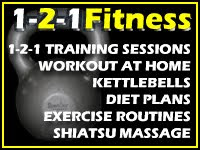EAT MORE FREQUENTLY.
Eating 5-6 small meals a day as opposed to “three squares” causes your metabolism to work constantly. Eating larger meals, however, slows your metabolism and forces leftover calories to be stored as fat.
GET LEAFY.
Those who eat a salad before dinner tend to consume less calories overall during dinner. But don’t sabotage yourself - stay away from high-fat dressings like ranch, blue cheese and Caesar.
EAT PROTEIN.
Since muscle-building is the fastest route to slim down, make sure your protein consumption is enough to keep up with your weight training. Eat too little and your gains could be slower. Get 1-1.5 grams of protein per pound of bodyweight per day to help your muscle gains along. Use protein bars and shakes to supplement your whole-food consumption and stave off cravings.
CARB SMART.
Keep your carbohydrates low to moderate when trying to lose weight. If you rotate low- and high-carb days, you’ll be able to keep your energy levels up while running a caloric deficit. Good, clean, fibre-rich carbs include oats, potatoes, rice and whole-grain bread. Also, limit high-carb drinks like fruit juice to post workout, when your body needs carbs to speed recovery.
CUT OUT FIZZY DRINKS.
Instead, rely on water. If you drink one can of fizzy drink a day, you’re adding 1,750 calories per week to your diet. Also, studies have shown that those who regularly consume diet sodas tend to gain weight in the long run because of over-indulgences elsewhere.
SKIP HAPPY HOUR.
Alcohol consumption can temporarily blunt testosterone levels, hindering muscle repair and growth and blunting sexual drive. Also, the calories from alcoholic beverages - in the neighbourhood of 100-200 each without cocktail mixers - add up faster than you may think.
SLOW DOWN, TURBO!
Successful dieters and fitness buffs will tell you that fast eating and body fat go hand in hand because you end up overeating. It takes about 10 minutes for the food in your stomach to signal your brain that you’ve eaten enough.
OPERATION DINNER OUT.
Be diligent when ordering in a restaurant. Ask to have your meats grilled without oil or grease. Request steamed vegetables with no butter. Get a salad (no cheese) with either low-fat dressing or vinaigrette.
CALORIES OUT!
The goal in any fat- or weight-loss program should be to burn more calories than you consume. Aim to cut total calorie consumption by about 250 calories per day. That means you’ll have to figure out how many calories you eat in a normal day. The maths will pay big dividends later.
AVOID SIMPLE SUGARS.
Too much sugar in your diet can wreak havoc on your metabolism by spiking your insulin response and promoting the accumulation of body fat. Immediately after exercise, however, is an ideal time to ingest simple sugars; otherwise, steer clear.
TIMED CONSUMPTION.
When you eat is just as important as what you eat. Eat two-thirds of your daily calories before dinner to avoid overeating later.
EAT MORE FIBRE.
Fibre, both soluble and insoluble, is essential to health and helps decrease body fat. Adults should consume 35-40 grams of fibre per day, with about one-third coming from insoluble fibrous sources. Along with fibre-rich whole grains, consume large amounts of fibrous vegetables, such as broccoli, to attain your daily intake and promote satiety.
PREPARE.
If your workplace serves nothing healthy, take food or snacks along with you.
GET YOLKED.
Eating eggs for breakfast was found to reduce hunger and food intake for up to 24 hours.
DON’T BE SALTY.
Excess sodium consumption can make you look softer and cause you to burn less fat. To help you look leaner and strip sodium from your diet, drink more water, cut back on highly processed foods and use potassium chloride to season your foods.
GOT MILK?
Individuals who consumed high levels of dietary calcium in a 24-hour period had higher rates of fat oxidation that day than those who consumed lesser amounts. So stock up on low-fat versions of cheese, milk and yogurt; if you’re lactose intolerant, choose dark-green leafy vegetables, legumes and almonds.
GO NUTS!
Looking for a healthy snack? Eating a handful of almonds helped test subjects lose 62% more weight, 56% more fat and 50% more from their waistline after 24 weeks compared to those who followed the same diet without almonds.










